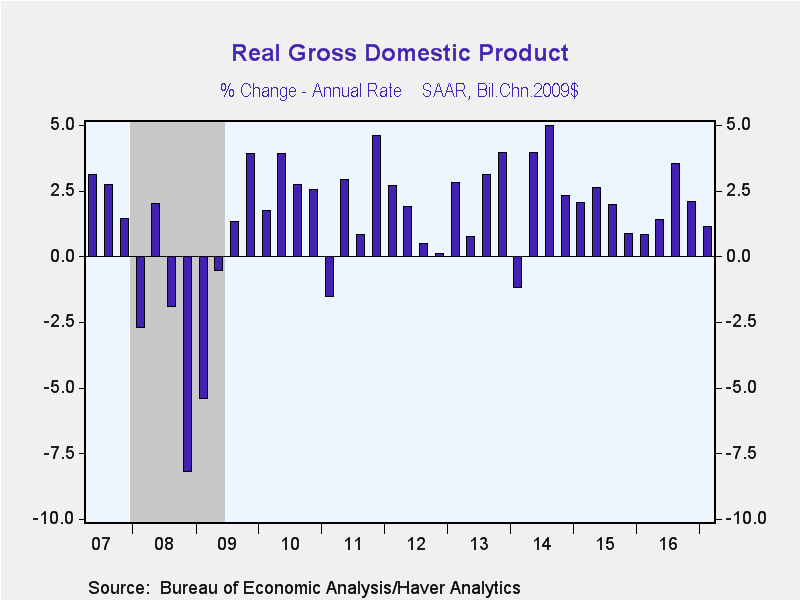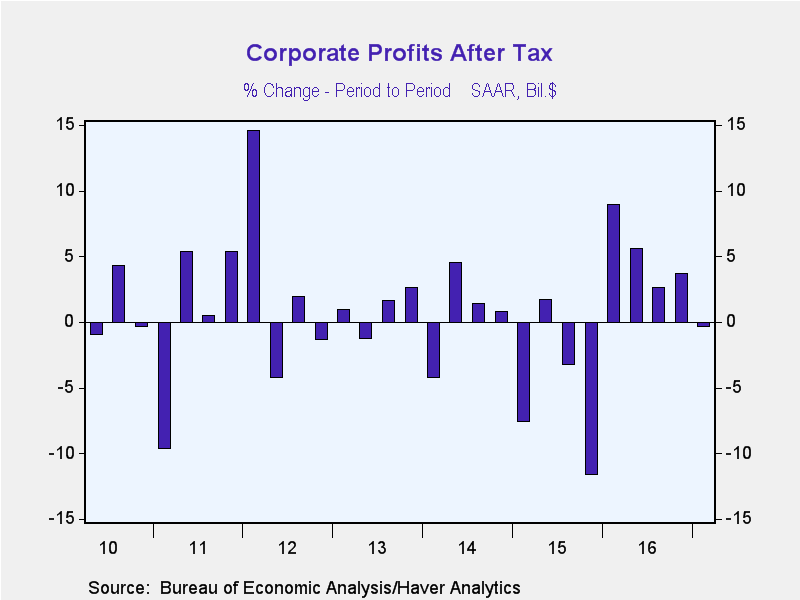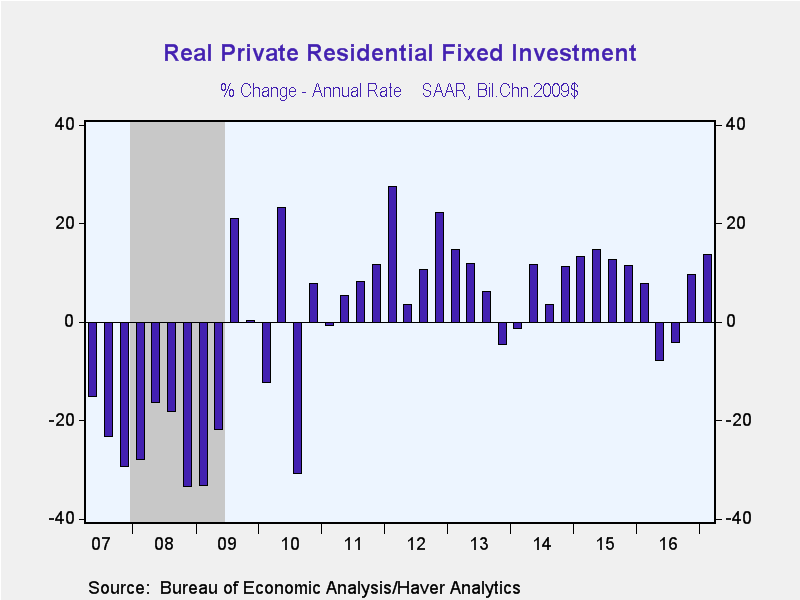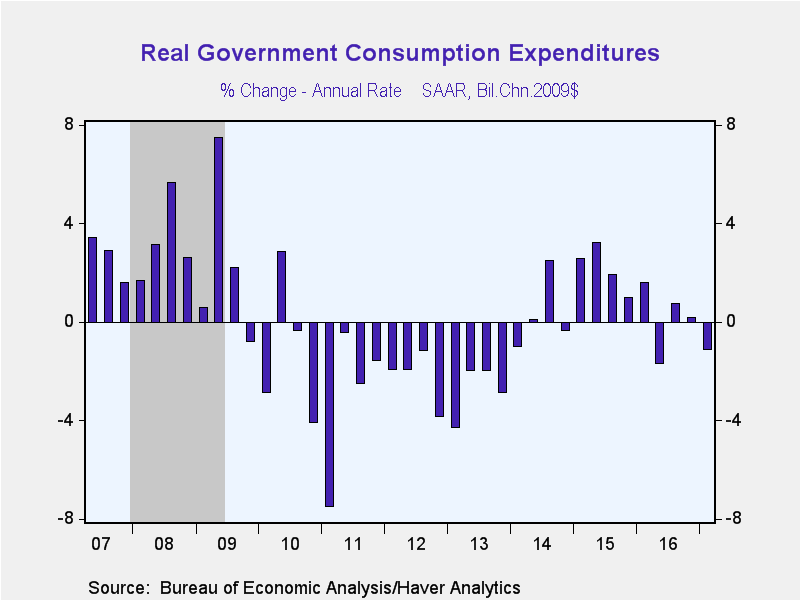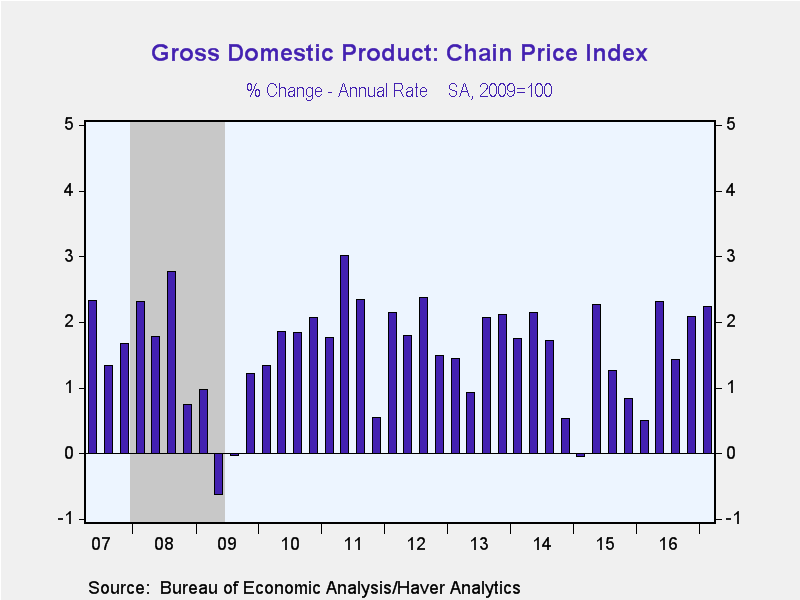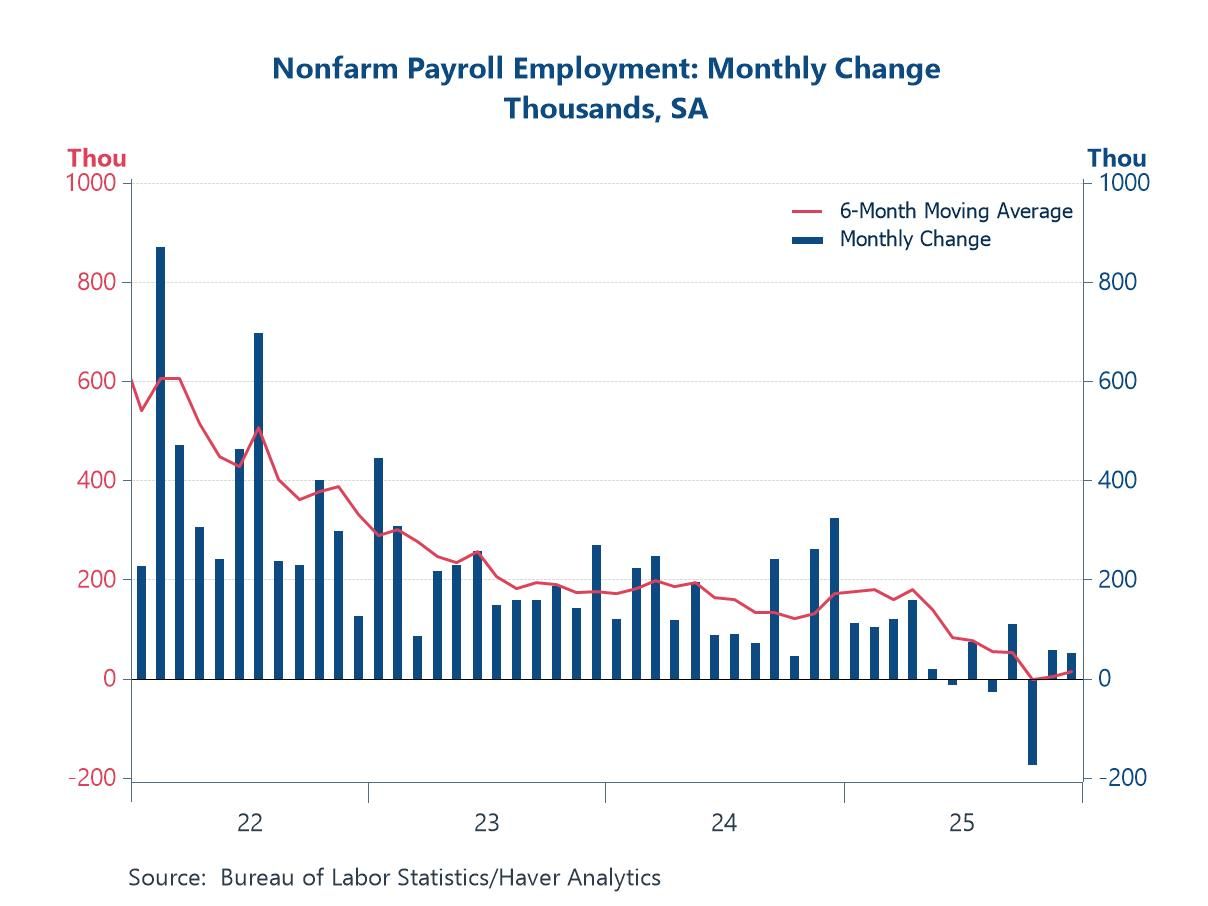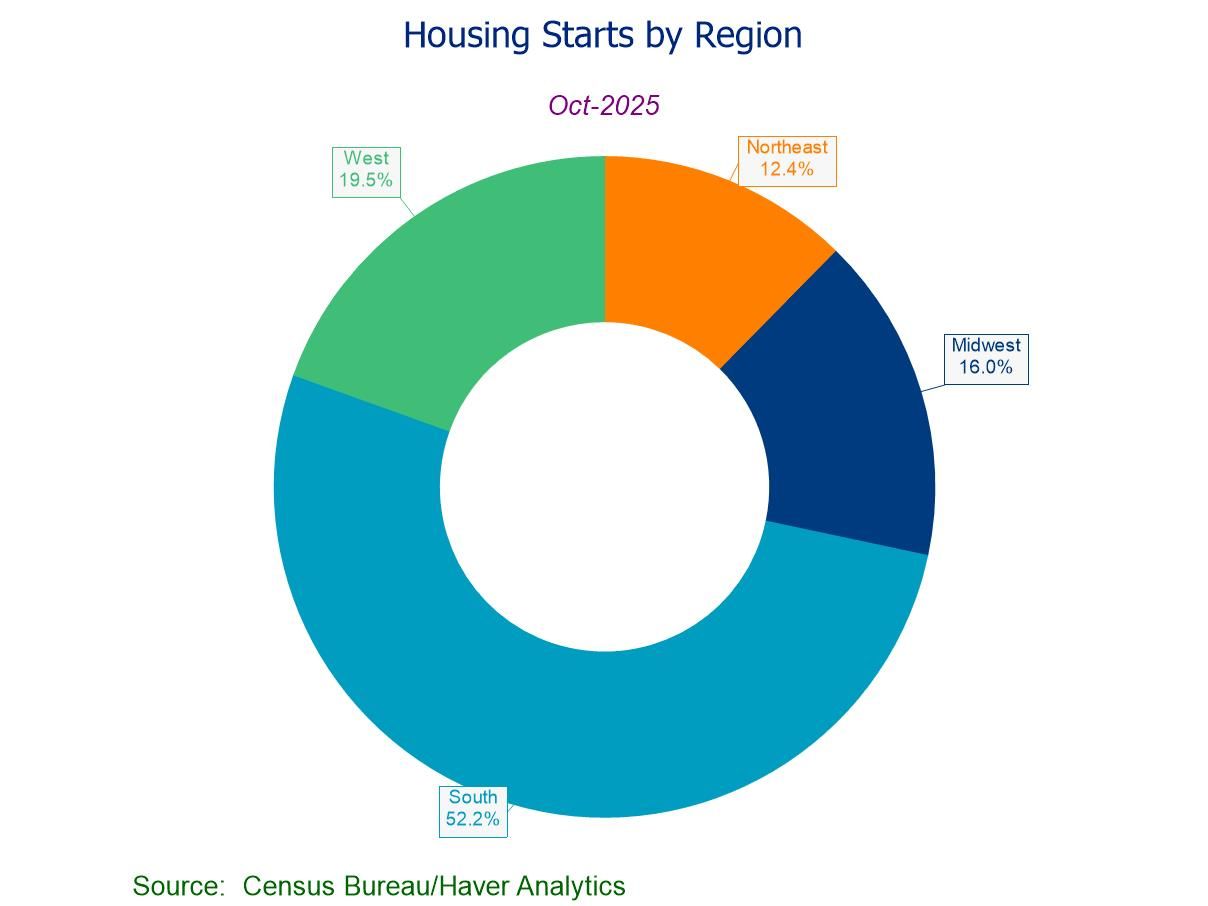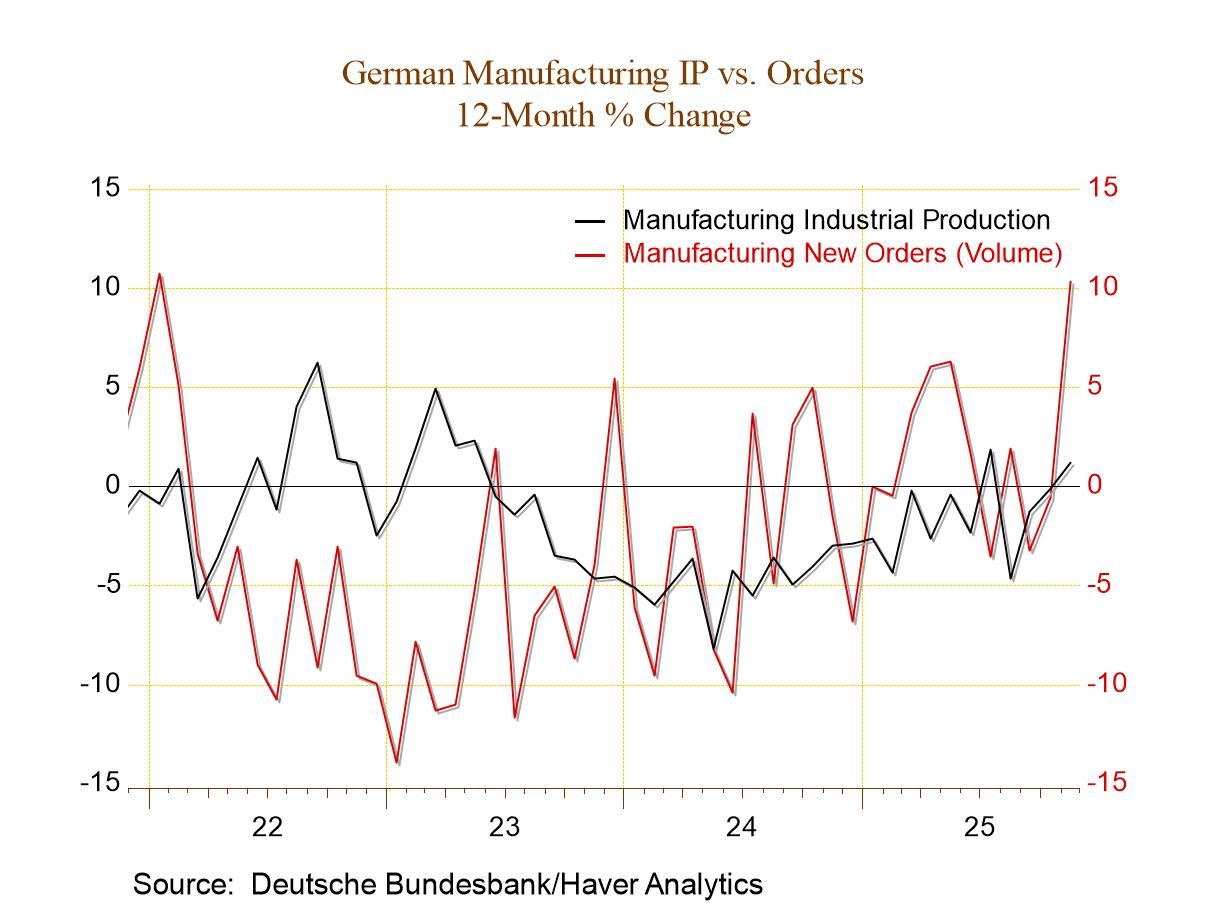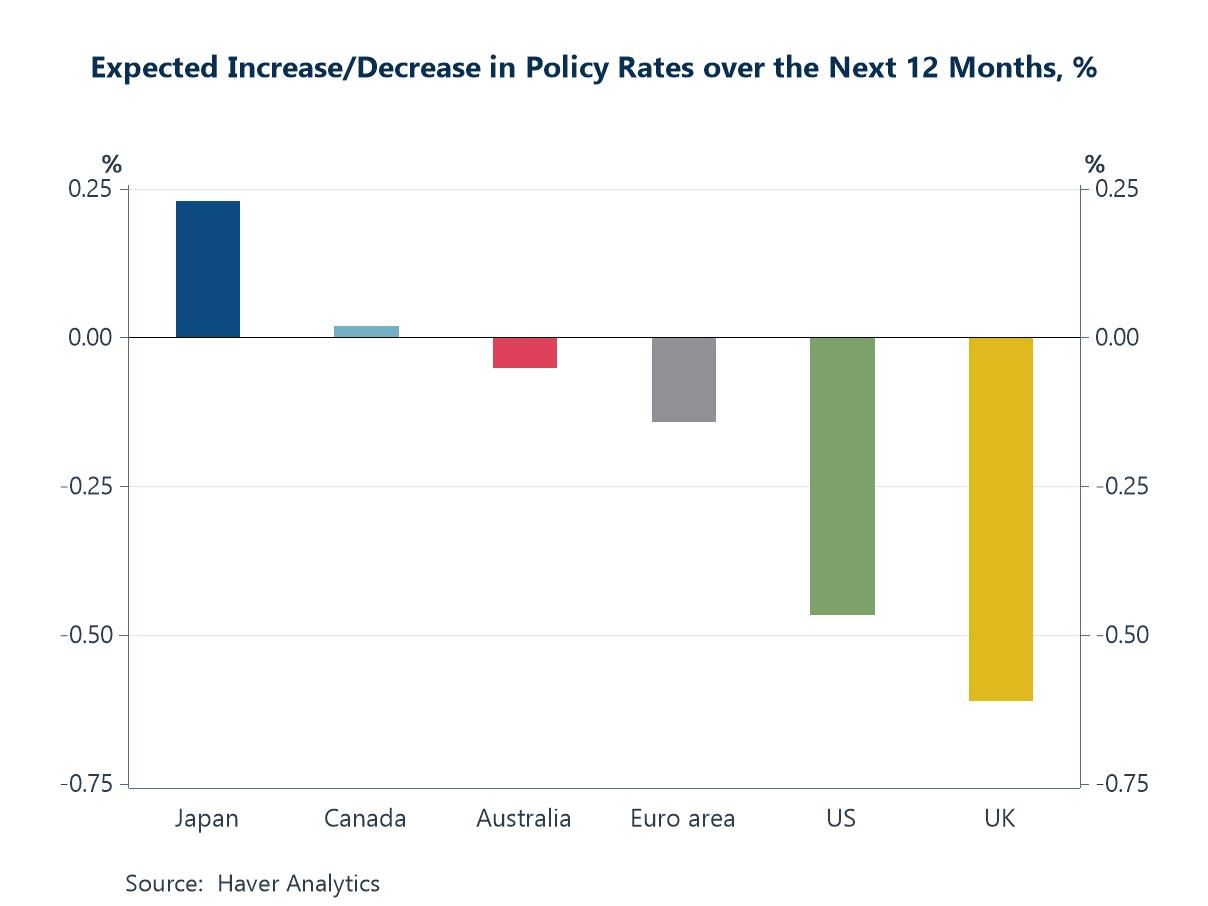 Global| May 26 2017
Global| May 26 2017U.S. GDP Growth Revised Up, But Corporate Profits Decline
by:Tom Moeller
|in:Economy in Brief
Summary
Economic growth was revised to 1.2% during Q1'17, up from the advance estimate of 0.7%. Growth remained the weakest in three quarters. A 0.8% advance had been expected in the Action Economics Forecast Survey. Raised estimates of [...]
Economic growth was revised to 1.2% during Q1'17, up from the advance estimate of 0.7%. Growth remained the weakest in three quarters. A 0.8% advance had been expected in the Action Economics Forecast Survey. Raised estimates of consumer spending and business investment accounted for the revision.
After-tax corporate profits without IVA & CCA declined 0.3% (+11.9% y/y) following four quarters of strong increase. Before-tax profits with IVA & CCA fell 1.9% (+3.7% y/y). Nonfinancial sector earnings declined 1.6% (-5.6% y/y). Earnings in the financial sector fell 5.5% (+12.3 y/y) while foreign sector earnings improved 1.4% (24.6% y/y).
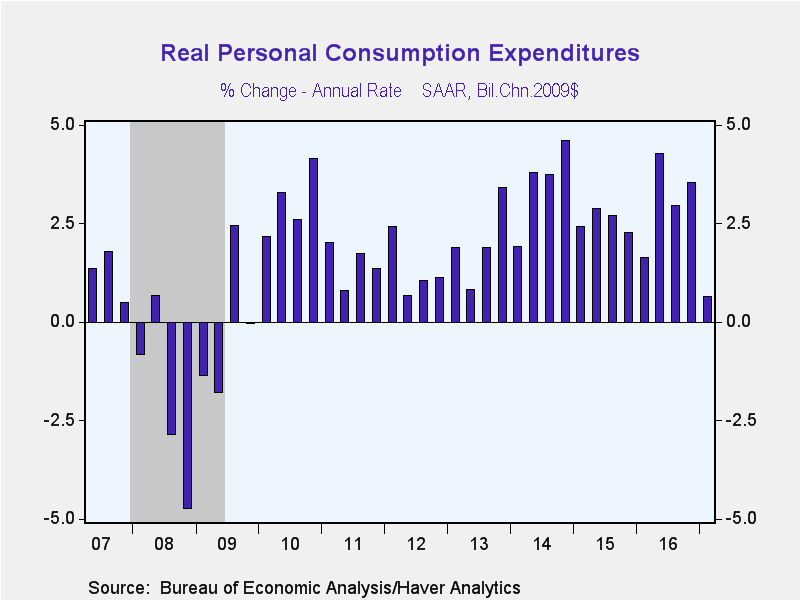 Growth in personal consumption expenditures was increased to
0.6% from 0.3%, but it remained the weakest advance since a slight decline in
Q4'09. Growth was held back by a lessened 1.4% decline (+7.7% y/y) in durable
goods spending which followed three straight quarters of 9%-to-12% growth. Motor
vehicle outlays declined a lessened 13.9% (+6.9% y/y) and reversed most of the
Q4 jump. Offsetting this decline was a raised 13.2% surge (12.9% y/y) in
recreational goods & vehicle consumption and a little-changed 2.9% gain (5.6%
y/y) in home furnishings & appliances purchases. Nondurable goods outlays
increased a lessened 1.2% (2.4% y/y), a gain held back by a smaller 7.3% decline
in spending (-2.9% y/y) on energy products. Clothing outlays also fell an
unchanged 5.1% (-0.4% y/y), but food purchases rose a reduced 3.1% (4.9% y/y).
Growth in services purchases of 0.8% (2.2% y/y) was revised a bit higher, but
still restrained by a 1.5% decline (+1.0% y/y) in housing & utilities
outlays. Health care outlays rose a smaller 0.9% (3.5% y/y) while recreation
spending increased a strong and little-changed 3.8% (2.0% y/y). Restaurant &
hotel spending rose a still strong 2.9% (1.9% y/y).
Growth in personal consumption expenditures was increased to
0.6% from 0.3%, but it remained the weakest advance since a slight decline in
Q4'09. Growth was held back by a lessened 1.4% decline (+7.7% y/y) in durable
goods spending which followed three straight quarters of 9%-to-12% growth. Motor
vehicle outlays declined a lessened 13.9% (+6.9% y/y) and reversed most of the
Q4 jump. Offsetting this decline was a raised 13.2% surge (12.9% y/y) in
recreational goods & vehicle consumption and a little-changed 2.9% gain (5.6%
y/y) in home furnishings & appliances purchases. Nondurable goods outlays
increased a lessened 1.2% (2.4% y/y), a gain held back by a smaller 7.3% decline
in spending (-2.9% y/y) on energy products. Clothing outlays also fell an
unchanged 5.1% (-0.4% y/y), but food purchases rose a reduced 3.1% (4.9% y/y).
Growth in services purchases of 0.8% (2.2% y/y) was revised a bit higher, but
still restrained by a 1.5% decline (+1.0% y/y) in housing & utilities
outlays. Health care outlays rose a smaller 0.9% (3.5% y/y) while recreation
spending increased a strong and little-changed 3.8% (2.0% y/y). Restaurant &
hotel spending rose a still strong 2.9% (1.9% y/y).
Business fixed investment rose a strengthened 11.4% (3.6% y/y) versus the initial estimate of a 9.4% gain, following a 0.9% Q4 rise. Structures investment surged 28.3% (8.4% y/y), after declining during all of 2015 and 2016. Producers durable equipment outlays increased a lessened 7.2% (0.3% y/y), only the second increase since Q3'15. Industrial equipment outlays gained a softened 7.8% (4.8% y/y). Information processing equipment investment rose a lessened 12.5% (5.0% y/y) and intellectual property product investment gained a strengthened 6.7% (3.8% y/y). Residential investment surged 13.7% (2.4% y/y), which was unrevised.
A reduced rate of inventory investment sapped slightly more than 1.0 percentage points from overall economic growth. That was upwardly revised and reversed the Q4'16 addition. A 0.2 percentage point contribution to growth from the foreign trade sector also was more than estimated initially reflected an little-changed 5.9% rise in exports (3.1% y/y) and a lessened 3.8% growth in imports (3.7% y/y).
The decline in government sector outlays was lessened to 1.1% (-0.5% y/y), but spending still fell to the lowest level since Q3'15. Federal government investment declined a little-changed 2.1% (-0.3% y/y), led by a 3.9% drop (-2.2% y/y) in defense spending. Nondefense purchases improved 0.6% (2.4% y/y). State & local government spending fell 0.6% both q/q and y/y.
The gain in the chain-type GDP price index was lessened to 2.2%, but remained the fastest rate of growth in three quarters. A 2.3% rise was expected. The PCE price index advanced 2.4%, the quickest rate of increase since Q2'11. The business fixed investment price index rose a lessened 1.3% (0.9% y/y), the swiftest rise since Q2'14. Growth in the residential investment price index slowed to an increased 1.8% (4.5% y/y), the slowest growth since Q2'15.
The GDP figures can be found in Haver's USECON and USNA database. USNA contains virtually all of the Bureau of Economic Analysis' detail in the national accounts, including the integrated economic accounts and the recently added GDP data for U.S. Territories. The Action Economics consensus estimates can be found in AS1REPNA.
Tom Moeller
AuthorMore in Author Profile »Prior to joining Haver Analytics in 2000, Mr. Moeller worked as the Economist at Chancellor Capital Management from 1985 to 1999. There, he developed comprehensive economic forecasts and interpreted economic data for equity and fixed income portfolio managers. Also at Chancellor, Mr. Moeller worked as an equity analyst and was responsible for researching and rating companies in the economically sensitive automobile and housing industries for investment in Chancellor’s equity portfolio. Prior to joining Chancellor, Mr. Moeller was an Economist at Citibank from 1979 to 1984. He also analyzed pricing behavior in the metals industry for the Council on Wage and Price Stability in Washington, D.C. In 1999, Mr. Moeller received the award for most accurate forecast from the Forecasters' Club of New York. From 1990 to 1992 he was President of the New York Association for Business Economists. Mr. Moeller earned an M.B.A. in Finance from Fordham University, where he graduated in 1987. He holds a Bachelor of Arts in Economics from George Washington University.


